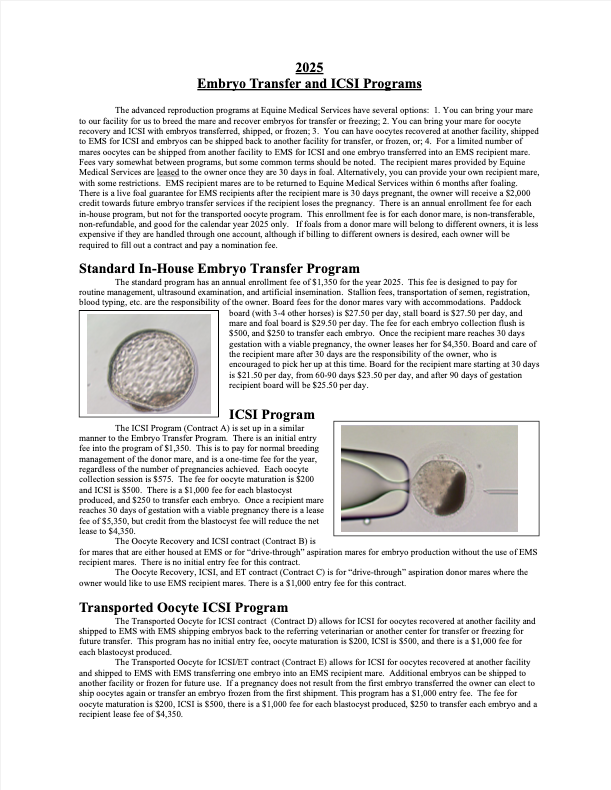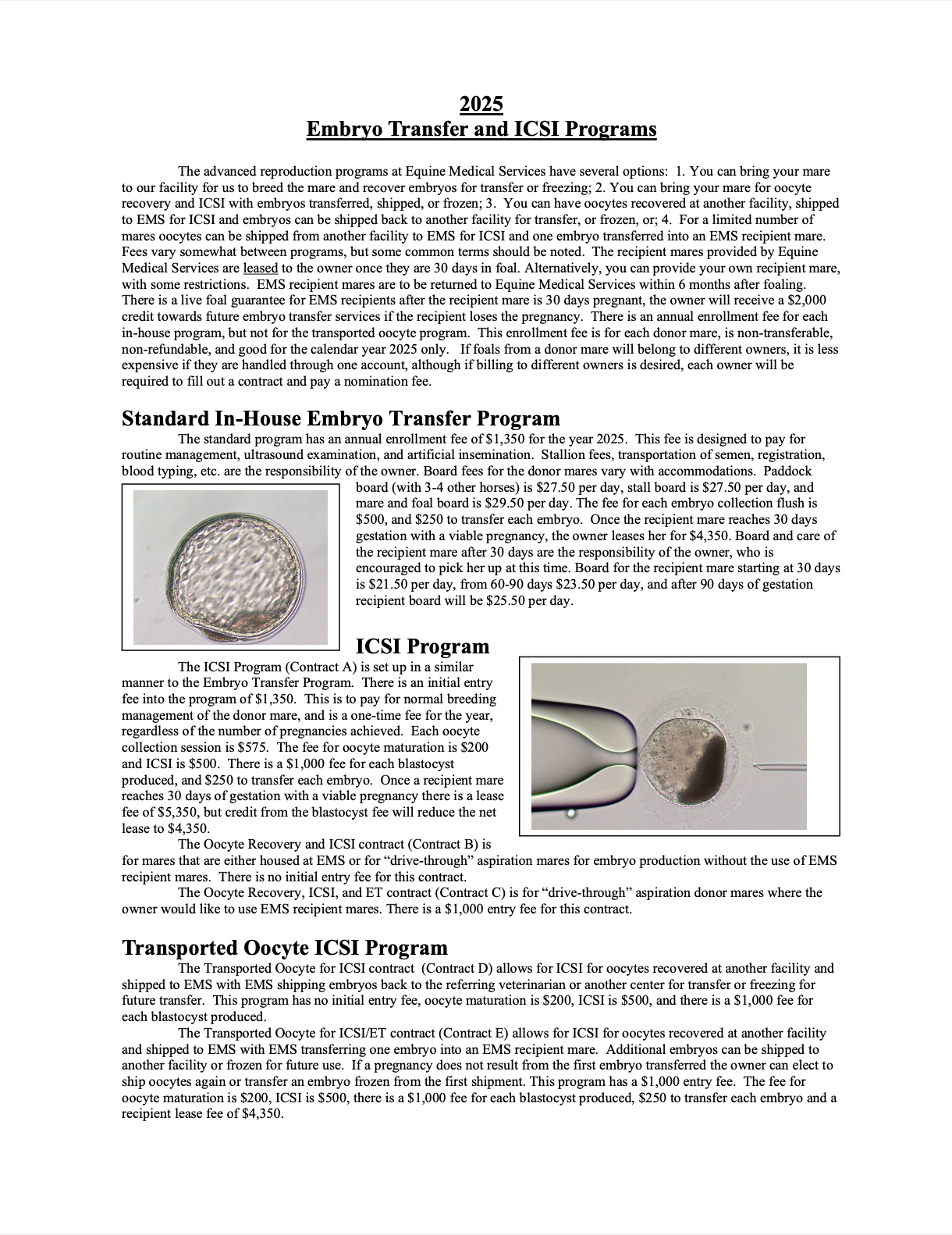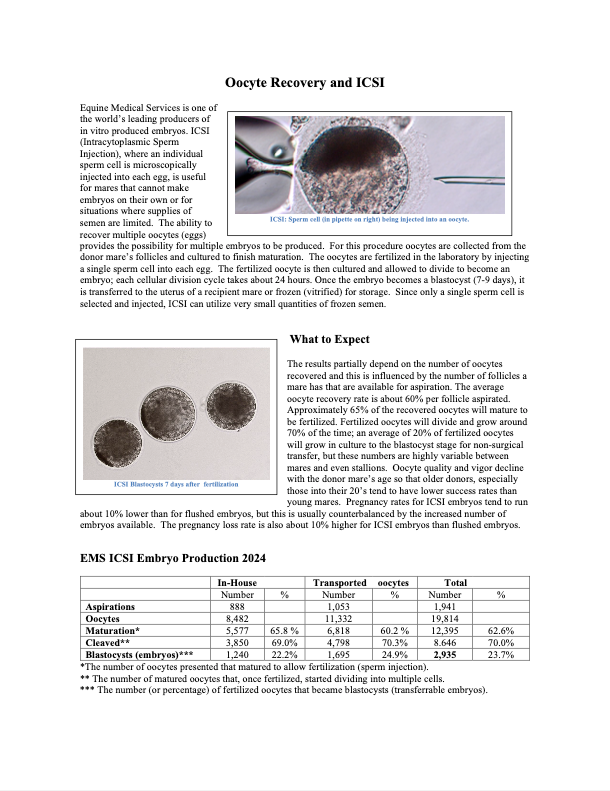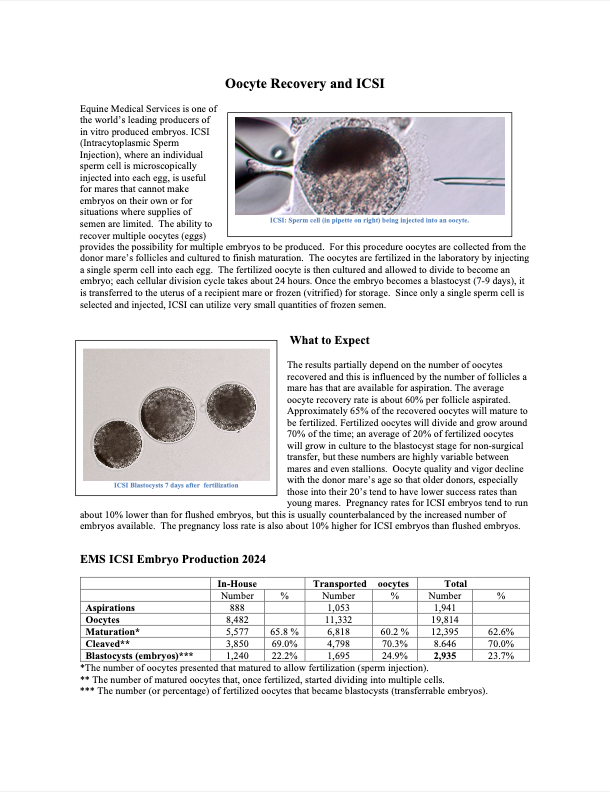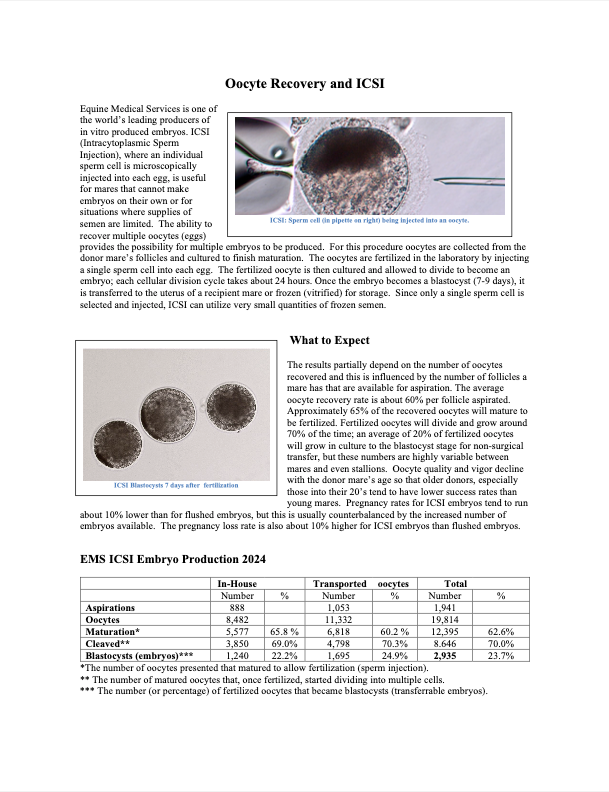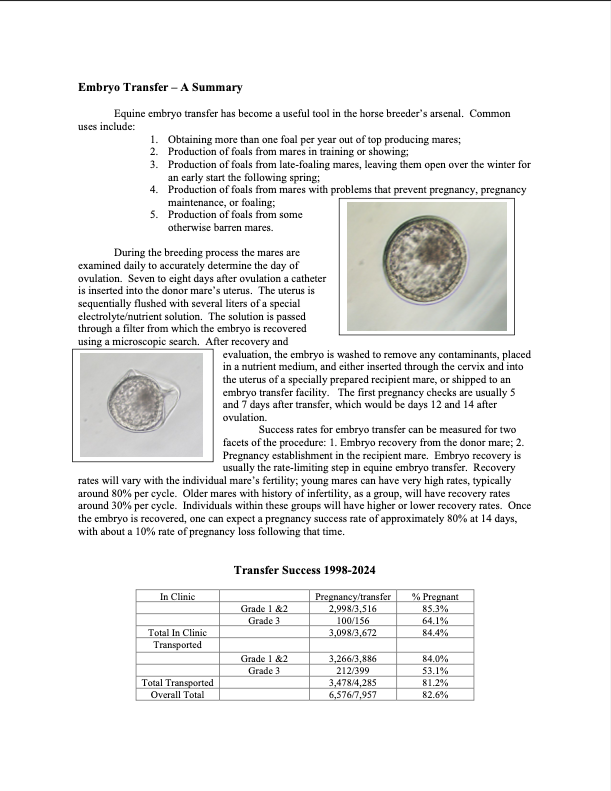Embryo Transfer FAQs
-
Can another mare be substituted for the original enrollment mare?
No. An additional nomination fee will apply for each subsequent enrolling mare.
-
How many flushes are included in each nomination fee?
The nomination fee for both the on-site and transported contracts do not limit the number of flushes. There is no penalty for numerous tries.
-
Can a contract be carried over to the next calendar year?
No, the nomination is restricted to one season only.
-
How late in the year are prepared recipient mares available?
Contract dates run from February 1 to December 1 to ensure there will be recipient mares cycling and ready to receive your donor mare’s embryo.
-
Is there a risk you will run out of recipient mares?
We have more than 800 recipient mares of all shapes and sizes in our herd, so it is highly unlikely that availability will run out. Our team of technicians will make sure a recipient mare is ready when your embryo arrives.
-
Can I request a particular recipient mare or type of mare?
We generally try to match the donor mare’s breed type with a recipient mare of appropriately coordinating size. You may make requests concerning a recipient’s breed, size, etc., but we cannot guarantee that we can meet every request. When selecting a recipient mare for each embryo, our primary criterion must concern which mare is most likely to result in a pregnancy and live foal. After that condition has been met, we can attempt to accommodate other requests.
-
What if my recipient mare loses her pregnancy?
A $2,000 credit will be placed on your account toward future embryo transfer work if the mare loses her pregnancy after the initial 30 days pregnancy examination, or if the foal fails to stand and nurse within 24 hours of birth.
-
How many embryos can a mare produce in one year?
This is dependent on the fertility of the individual mare and the length of the breeding season. A mare can be flushed every 17 days, on average. An embryo should be produced in the majority of cycles in a mare with good fertility, so numerous pregnancies can result over the period of a year. EMS has had several mares with six to seven pregnancies in a season, and even more may be possible. Unfortunately, not all mares presented are this fertile, especially if they have histories of reproductive problems. Repeated breeding can also result in inflammation or infection, requiring off-time between breedings in some instances.
-
Who orders the semen and how will I know when to have it shipped?
EMS will coordinate breeding and the shipping of semen for donor mares. We ask that you make all stallion arrangements ahead of time, including paying your stud fee. For frozen semen, it’s best to have it shipped to us ahead of time so we can keep it in storage before it is needed.
-
Why do you recommend that I insure the recipient mare and fetus?
The recipient lease is strictly that―a lease―so you are responsible for the health of the mare while she is in your care. If she should die, not only would you lose the fetus (although you would receive the $2,000 credit), you would also owe EMS for the purchase price of the recipient ($2,000).
-
What is the best way to ship my embryos to you?
For a transported embryo, the less time out of the mare, the healthier they are. Make whatever arrangements you can to reduce the transport time. We recommend flying embryos counter to counter, which requires the shipper to be pre-approved by the airline as a known shipper. If air shipping is not an option or you’d rather use FedEx, you will need to schedule the embryo recovery flush as late in the day as possible.
-
Is it better to send embryos or to bring my mare to EMS?
Pregnancy rate is slightly better for non-shipped embryos (by a margin of approximately 5%). Most mares can be handled well at your location and the embryos shipped, provided you have a veterinarian with the expertise to handle the breeding, flushing and packaging for shipping. Some mares with breeding or fertility problems might be better handled here, but if you are breeding to a stallion whose semen does not ship well, it may be best for the mare to be near the stallion so fresh semen can be used. The decision of whether to bring your mare to EMS or to handle it at home may involve the occupation of the mare (for instance, whether you want to keep her in training or showing during this process), the availability of air transport (how quickly the embryo can be shipped), the expertise of your veterinarian and the availability of quality semen.

